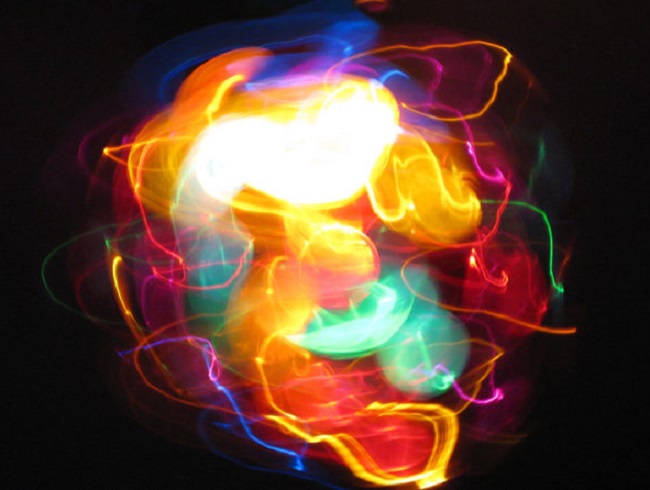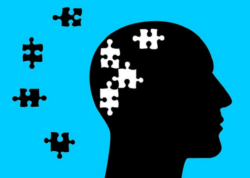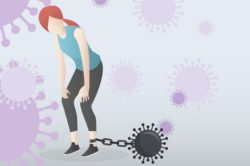I have been looking into calcium (Ca2+) management and heart function after reading a report where a Ca2+ storm was identified in COVID infected cardiomyocytes. I am not convinced that the calcium storm or the heart damage found by the researchers was unique to COVID infected cardiomyocytes or any other cells, but may simply represent a final common pathway of impending mitochondrial collapse. I am working on a more comprehensive paper regarding the intricacies of the Ca2+ management by the mitochondria in the heart, but that will take a few more weeks to finish. In the meantime, I have found some interesting connections regarding calcium, magnesium (Mg+), caffeine, thiamine, and the mitochondria that I would like to share. Here are some notes from a paper entitled: Independent modulation of the activity of alpha-ketoglutarate dehydrogenase complex by Ca2+ and Mg2+.
Calcium, Magnesium, and ATP Production
Ca2+ activates oxidative phosphorylation (OXPHOS) at physiological concentrations but inhibits it at supraphysiologic concentrations. OXPHOS refers to the enzymatic conversion of food into energy (ATP) by the mitochondria. Adequate ATP is an absolute necessity for life. That means that the Ca2+ storm, proposed by SARS-CoV-2 direct cardiac damage through spike-mediated cardiomyocyte fusion, would effectively shut down mitochondrial function completely, which in turn, could be considered the cause of death.
The relationship between Ca2+ and Mg+ is particularly interesting when one considers this tidbit of information.
…we show that the effect of Mg2+ on KGDHC [alpha-ketoglutarate dehydrogenase complex – a key mitochondrial enzyme involved in ATP production] activity depends upon the presence of thiamine pyrophosphate [TPP]. In the absence of TPP, Mg2+ inactivates whereas Ca2+ stimulates the enzyme’s activity.
Among the reasons I find this interesting is that many health protocols favor high-dose magnesium supplementation often chronically and almost always absent thiamine. In the absence of thiamine, high-dose magnesium therapy presumptively would derail OXPHOS, which, as part of the major energy pathway of the mitochondria, would create problems with Ca2+ management in the cardiomyocyte, potentially exacerbating heart function. Indeed, the absence of the thiamine alone will cause these problems, but when combined with high dose Mg+ therapy, we would potentially exacerbate this cascade. I cannot help but wonder if these high-dose magnesium protocols aren’t doing more harm than good as far as mitochondrial and heart function are concerned.
Additionally, magnesium competes with Ca2+ at the ryanodine receptor (receptor on the sarcoplasmic reticulum [heart version of endoplasmic reticulum] that sequesters intracellular Ca2+) to inhibit the release of intracellular Ca2+. Magnesium counteracts Ca2+ activation/release suggesting that the use of Mg+ to temper these reactions to Ca2+ might be warranted in some cases, particularly where deficiency is present. However, it also suggests that in the absence of sufficient thiamine, magnesium will inactivate the KGDHC, which will imperil ATP production and ultimately lead to poor Ca2+ management; a key factor in heart failure.
Caffeine and Sodium
Caffeine increases the sensitivity of the ryanodine receptor – meaning less Ca2+ is required to open the receptor and release Ca2+ stores. Given how many of us are addicted to caffeine, this is problematic. Doubly concerning when one considers how many folks are not only addicted to caffeine but also deficient in key micronutrients like thiamine, the other B vitamins as well as in magnesium and even calcium. Insufficient micronutrients coupled with regular and usually excessive caffeine intake would negatively impact heart function and may be at the root of much of the cardiovascular disease and dysfunction experienced by vast swaths of the population.
As one might expect, an overload of Ca2+ stimulates mitochondrial permeability transition pore (mPTP) opening and mitochondrial swelling, resulting in mitochondrial injury, apoptosis, cardiac remodeling, and ultimately the development of heart failure. The cascade includes excessive ROS which then creates a demand for more energy/ATP to resolve. Since, in the absence of thiamine, magnesium inactivates KGDHC, and KGDHC is both a rate-limiting step in ATP production, but also performs anti-oxidant duties, this pattern can easily become a death spiral. Caffeine expedites this process.
Finally, the main outward pump of Ca2+ from the mitochondria is not only ATP dependent but also requires sufficient sodium (Na) because for every 1 molecule of Ca2+ kicked out of the mitochondria, 3-4 Na’s are pumped in. Here too, I cannot help but think this process is disturbed by the low sodium intake promoted by heart health advocates.
How Does This Affect the COVID Heart?
If the report that initiated this search SARS-CoV-2 direct cardiac damage through spike-mediated cardiomyocyte fusion is correct and COVID, like other viral infections, infects the heart causing dysregulation of Ca2+ management, which impairs mitochondrial OXPHOS, which further impairs Ca2+ management, then we ought to be considering giving COVID patients thiamine. Indeed, I have argued throughout this pandemic, we ought to be utilizing thiamine and supporting mitochondrial function more aggressively. This is just one more reason.
We Need Your Help
More people than ever are reading Hormones Matter, a testament to the need for independent voices in health and medicine. We are not funded and accept limited advertising. Unlike many health sites, we don’t force you to purchase a subscription. We believe health information should be open to all. If you read Hormones Matter, and like it, please help support it. Contribute now.













